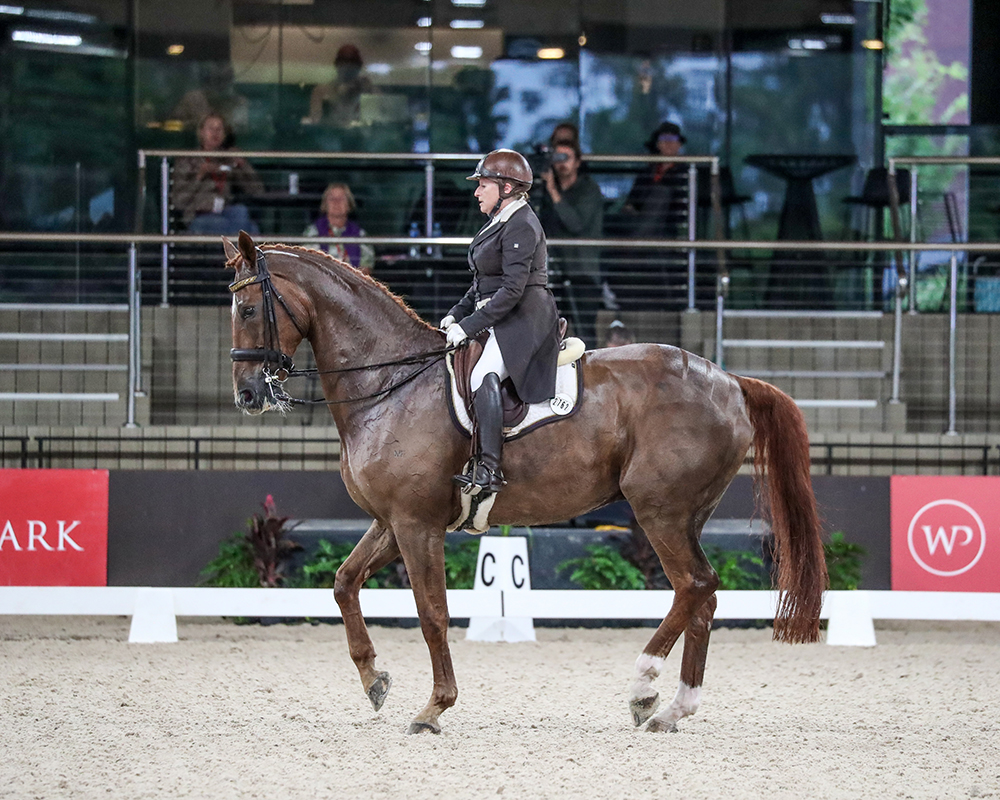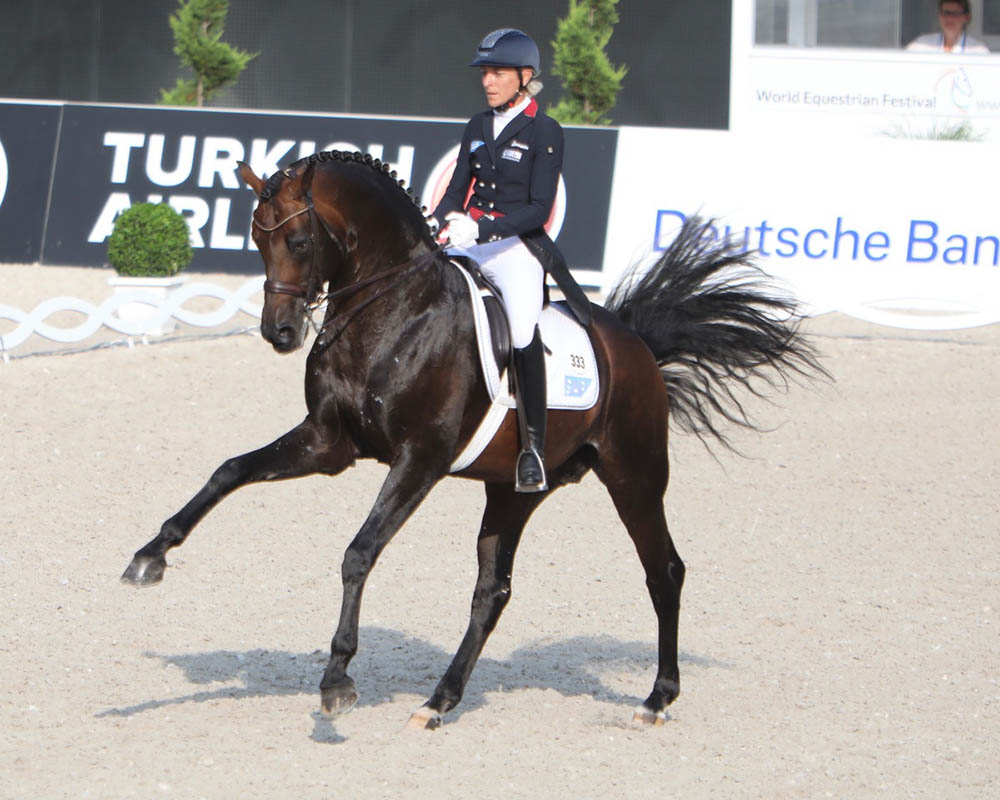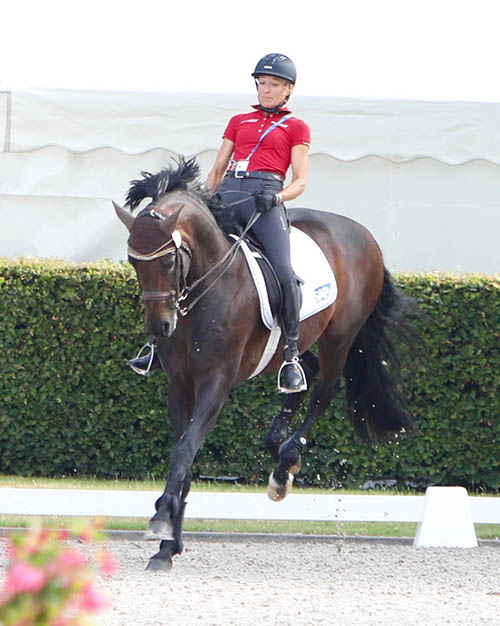“The person who never makes a mistake never makes anything”, is one of my favourite sayings. If we want to improve we need to step out of our comfort zone, be able to take a risk, extend ourselves and have a go.

As riders, we must have the resilience to be able to even fail sometimes and, metaphorically, at times literally “get back on the horse”. We learn more from the times we made a mistake than when it all worked out like a dream. Henry Ford is quoted as saying: “The only real mistake is the one from which we learn nothing”.
Our horse also must be able to make a mistake, to try to do what we ask — but if it’s not right we mustn’t be too strong about it. More about this later
Of course, it’s best to step up and out of your comfort zone only as far as it is safe to. I remember wanting to jump the big fences, entering a class that I was nowhere near experienced enough for (neither was my horse). We jumped the big Power and Speed class, with me thinking that if the jumps were bigger, you should just have a bit more speed to carry you over it. Not a good plan for 1.5m square oxers, especially on a 15.3hh D Grader. This was not a bold way to learn, it was reckless, stupid and dangerous. Luckily, we both survived the crash that ensued. We both did go on to jump big tracks confidently.
I learnt a great deal from this mistake. I stayed in D Grade with him until we were ready to progress, but I bought a horse who knew a bit more about jumping than I did, and I got lessons from someone who knew a lot more about jumping than I did. I did not enter a big class like that until my coach thought that we were ready.
There is no learning from fatal mistakes. Horse riding is dangerous, so remember to make progress step by step, incrementally. Get advice from a professional who will understand the risks more than you when you are stepping up in a risky sport, such as where jumping or high speed is involved.
When we make a mistake, we must have the integrity to own the mistake, not blame things out of our control. The things we can’t control, we can’t change, so look for the things you can change. I recently lost a lot of marks in a dressage test which required us to piaffe out of the walk. Now, this is a difficult transition only required in the Grand Prix Special, the highest test in the program. He did it beautifully in the warm-up. As I went to ask for piaffe in the ring, a lady with a noisy pram came around the corner right in front of him, and right where a noisy whipper snipper had appeared and terrified him in the arena familiarisation. A big mistake ensued.


“You should not punish him
for making a mistake.”
Now, it won’t help me to blame the lady with the pram. Or the man with the whipper snipper. And it won’t help me to blame Limelight, who tries as hard to do his best as any horse I have ever ridden. I need to own that I could have worked harder to keep his attention, preparing the movement with his head a little lower, make a little bend, or a little shoulder-fore position, giving him some easy instructions that he could follow so he didn’t think so much about the pram. I shouldn’t have paid it any attention, helping him to pay attention to me. And now we are home I need to work more to help him learn to pay attention even when there are distractions around.
REWARD ANY ATTEMPT
When we are teaching the horse something new he will not necessarily know what we want. He might make a mistake. We might be asking for lengthening in the trot, but he thinks that when we are asking for more energy that we want canter. You should not punish him for making a mistake. You want him to try. You just patiently correct it and ask again until he does what you want, then reward. You might need to make the right thing easy and the wrong thing difficult. Make sure he is really straight, or even bent a little to the outside, so that he is less likely to break into canter. Reward any attempt. Improve his ability to lengthen step by step. It is your mistake if you ask too much too soon.
Teaching the flying changes can be very challenging. It is especially important that he is allowed to make a mistake with something complex like this or you will quickly teach him to be tense and worried with the changes. Once he is worried it is very hard to fix it. A nice exercise for the changes recommended by Rozzie Ryan is to canter left around the arena. Ride down the quarter line. Change the bend, keep the canter quick and jumping, new inside leg, and ask for the flying change onto the counter canter (right). Counter canter around the short side and go back across the diagonal.
This exercise makes it easy to not worry if there is a mistake. If he doesn’t do the change, or it’s late, just keep going and do it again on the next quarter line. You can help him understand that you want a change by starting with a simple change at the spot you want to next do the flying change. Do a few repetitions of this. If you ask for the flying change and it doesn’t happen, you could ask for the simple change if you have enough balance and room to do it easily. Just don’t harass him if he makes a mistake. If he makes a few mistakes in a row, no stress. Do something he does understand that prepares the change and check if maybe you are making a mistake, for example, starting the change with your new inside hand to turn the shoulder, rather than holding the new outside rein to roll the weight back onto the hind leg (the changes have to come from the hind, e.g. not the front leg, if they are to be clean).
Of course, I would recommend that when you are teaching the changes for the first time, be happy if you get one. Finish the lesson with a big reward as soon as he does it. Don’t try to repeat it that day. Repeat it once a day for 100 days, not 100 times in one day. (If you want to read more about training the changes, you can find articles previously written by Kerry here.)

JUDGES ARE ONLY HUMAN
Now, in dressage, we know that judges make mistakes too. The judges are human and are limited, just as the rest of us, by their human brains. Judges, being human, have bias. The Nobel Prize has been won by scientists who demonstrated the nature and universality of bias. The judges may say that they are not biased, but if they accept that they are human they must accept that they are biased. For example, we all have negativity bias. We are more likely to remember and be influenced by the negative things. This is a part of why we learn from our mistakes; we remember them and think more about them. (We should counteract this by deliberately focusing on what went well to help prevent duplicating a mistake).
We cannot control the judges’ bias and so need to accept that they do their best and get on with our riding. The judges have thrown their hat into the arena and are subject to the public scrutiny of all of the untrained judges out there. You cannot control the judges, so it’s best not to blame them for your low scores and just get on with giving them less reason to take marks way. Watch the video of your test. Be more rhythmical. Be straighter. Be more accurate. These are the things you can control.
So, don’t panic about a mistake; either your mistake or your horse’s mistake. Welcome it as a chance to learn. Don’t catastrophise and make it feel like a disaster — as long as you all live to fight another day it’s fine. If the worst thing that happens to you is you ride a bad test or have a bad show because you made a mistake, you are still living the dream that most people dare not even dream. I will leave you with this popular quote:
“It is not the critic who counts; not the man who points out how the strong man stumbles, or where the doer of deeds could have done them better. The credit belongs to the man who is actually in the arena, whose face is marred by dust and sweat and blood; who strives valiantly; who errs, who comes short again and again, because there is no effort without error and shortcoming; but who does actually strive to do the deeds; who knows great enthusiasms, the great devotions; who spends himself in a worthy cause; who at the best knows in the end the triumph of high achievement, and who at the worst, if he fails, at least fails while daring greatly, so that his place shall never be with those cold and timid souls who neither know victory nor defeat.” EQ
— Theodore Roosevelt
READ MORE BY DR KERRY MACK:
Young Horse Classes: A Fun Launching Pad – Equestrian Life, February 2022 issue
Making Sense of all the Bits & Pieces – Equestrian Life, January 2022 issue
The Secret to ‘Soft Hands‘ – Equestrian Life, December 2021 issue
Ask Less, Reward More – Equestrian Life, October 2021 issue
So You Want To Go To The Games? – Equestrian Life, September 2021 issue
The Ins & Outs Of Bitless Bridles – Equestrian Life, July 2021 issue
Taking The Plunge With The Lunge – Equestrian Life, June 2021 issue
Dressage for Showjumpers – Equestrian Life, May 2021 issue
23 Shoulder-In Exercises to Improve Your Horse – Equestrian Life, April 2021 issue
Understanding Your Horse’s Inner Thoughts – Equestrian Life, March 2021 issue
Make the Most of Your Seniority – Equestrian Life, February 2021 issue
Building Better Relationships – Equestrian Life, January 2021 issue
Whipping Up Controversy – Equestrian Life, December 2020 issue
The Importance of a Trusting Relationship – Equestrian Life, November 2020 issue
Welcome to Kindergarten for Foals – Equestrian Life, October 2020 issue
The Carrot or the Liquorice? Positive Reinforcement – Equestrian Life, September 2020 issue
Submission or Stress? Something to Chew On – Equestrian Life, August 2020 issue
A Relaxed Horse is a Happy Horse – Equestrian Life, July 2020 issue
The Literate Horse Rider – Equestrian Life, June 2020 issue
Why Horses Love Ingrid Klimke – Equestrian Life, May 2020 issue

